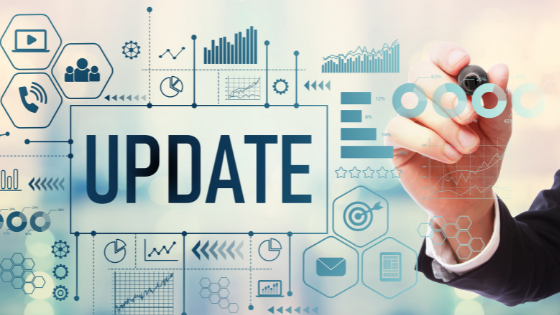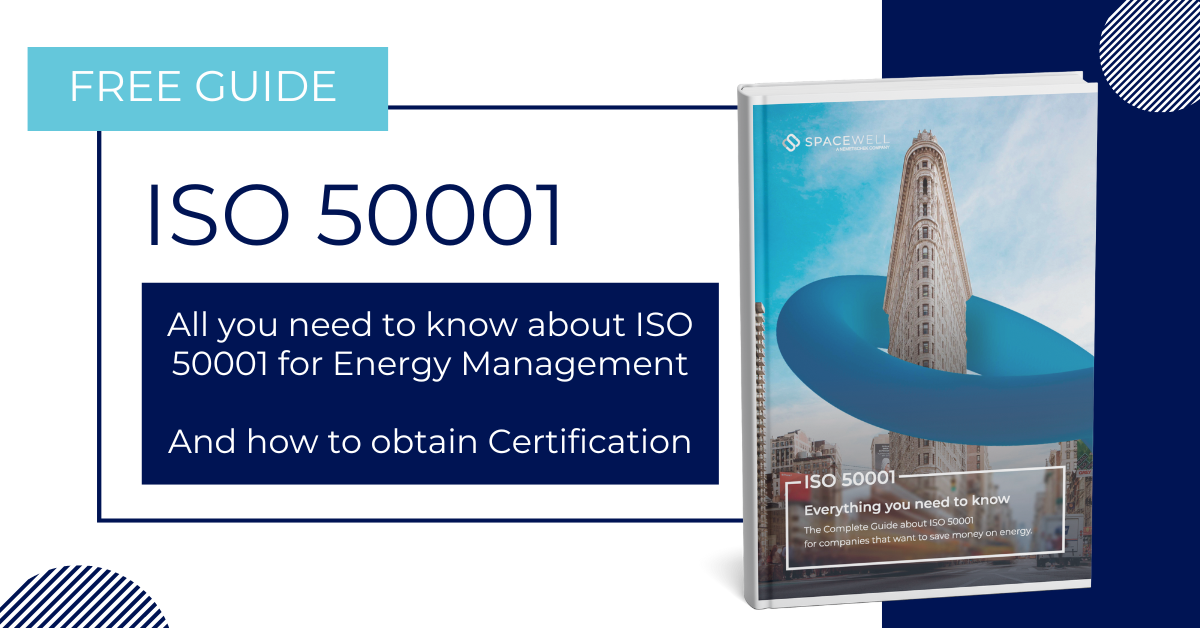The best-known international energy standard, ISO 50001, was reviewed in 2018 for the first time since its creation in 2011. To save you from having to read it again in full, here is a summary of all you need to know about the ISO 50001:2018 standard.
The Purpose of Standard ISO 50001
Organisations are in favour of improving their energy consumption management in order to reduce overhead costs. So the best option for your organisation is to implement energy efficiency management policies.
The question is… which standards do businesses follow in order to do that?
This business need gave rise to the creation of the ISO 50001 Energy Management System certification in 2011.
Quite a few years have passed since it was first published and like all ISO standards, it needed a review to adapt it to new technologies, regulatory measures and current circumstances. The result was the ISO 50001:2018.
You may want to ask yourself the following question: How will this energy management standard help my organisation?
Here is a list of some of the benefits of implementing this standard:
- It will provide you with the tools to identify the activities in your company that consume the most energy, when and where energy is lost and the cost.
- It will help you standardise energy management processes, by complying with energy and climate change legislation.
- It will help you improve good energy efficiency practices and energy management within your organisation.
- It will give you a set of directives to follow in applying new energy efficiency technologies.
- It will also allow you to integrate this management standard with others such as ISO 41001 (environmental management systems).
The final result will be a reduction in your energy consumption and hence in costs and your carbon footprint.
As is to be expected, this standard can be applied to any type of private or public organisation, regardless of its size and sector.
If you would like to learn more about what the new ISO 50001:2018 consists of before going on to discover the updates of the new standard, we strongly recommend you read this article about ISO 50001 concepts.
The 9 Major Updates of the New ISO 50001:2018 Standard
The main changes incorporated into the new version of the ISO 50001 standard were the result of adopting the structural improvements that are commonly found in all the ISO standards. This is what the organisation refers to as the “ISO High-Level Structure” or HLS.
The main updates of the new ISO 50001:2018 are set out below:
- Compatibility with other management ISOs such as ISO 14001 and ISO 9001 and improved alignment with other management certifications. If your company already has other ISOs or is in the process of obtaining them you can take advantage of the changes to also obtain the ISO 50001 certification.
- Extended to further sectors: It can be extended to the three major energy sectors: industrial, tertiary and transport.
- Improved energy planning alignment. The aim is for your organisation to be able to prepare more strategic and tactical plans.
- Increased importance of Senior Management. Leadership is to have clearly defined roles, responsibilities and authorities within the organisation.
- Inclusion of external communications. It extends the requirements related to internal communication while also including communication with the outside.
- New requirement: performing an assessment of the risks that may affect the correct implementation of the energy management system. The objective is to anticipate potential scenarios and deal with them before they materialise.
- Clarifications about energy efficiency and energy management systems. With particular emphasis on concepts definition. New requirements have been included for greater precision in the evaluation of energy efficiency from the consumer baseline.
- Data acquisition and standardisation have been clarified, mainly regarding data acquisition and the requirements. In other words, the plan must indicate the frequency with which the consumption data is obtained and stored, relevant variables, operational characteristics, static factors, etc.
- Increased number of metrics to demonstrate improvement in energy efficiency.
By now, you are most probably looking at the right ISO guidelines and not the 2011. But it’s relevant to understand how the standard has evolved and the key areas to consider. If you already have the ISO 50001 Certification and have any doubts, we recommend you get in touch with the firm you used to obtain it and they will help you adapt.
How do these Changes in the New ISO 50001 Affect your Company
Don’t be alarmed. If your company already has the ISO 50001 certification, the changes will not mean you lose it, rather it will mean an improvement in your organisation’s energy management.
But you should consider that your organisation has 3 years from the date of publication to make the transition to the new ISO 50001. So from August 2018 to August 2021, you have time to gradually adapt to the updates of the new ISO in order to continue to hold the ISO 50001 energy management certification.
Anyway, here are a few tips:
Contact an Energy Service Company or an Energy Consultant
If you already have the certification, contact the consultancy firm you used to obtain it and they will help you adapt.
If you don’t yet have the ISO 50001 certification and don’t know where to look, perhaps one of our partners can help you. Go to the section “Find Partners” where you can search by city or country, as you prefer. Our 250+ partners include a wide range of companies that specialise in energy consulting and provide ISO certification services.
Identify the Changes that Affect your Company
Now that you know the updates of the new ISO 50001:2018 standard, make a list of the aspects that have a direct effect on your company. If you are not sure, ask your energy consultant or an expert energy manager for help.
One of the best ways to see whether the changes affect your company to a greater or a lesser extent is to perform a review of your current Energy Management System. Identify its strengths and weaknesses and check that the results obtained for the previous ISO version coincide with those required by the current version.
Perform advanced analyses and create customised reports for adapting to the new ISO 50001:2018. It will prove very helpful.
Spacewell Energy Management System can help you or your energy manager in this task. It is an advanced energy management platform in which you can perform all types of analysis and create your advanced reports, customising them in detail for this purpose.
Design an Implementation and Adaptation Plan
Now that you have all the information you need to know where to start, create an internal document with all the aspects that need to be adapted.
Set up a workgroup with which to plan each of these aspects, in which each person is responsible for adapting to and complying with the new ISO 50001:2018 energy management standard.
Create a calendar and mark the tasks to carry out in order to implement the changes. It will help you check and control that all the aspects discussed by the work group are being covered.
Communicate the Changes to the Organisation and Implement the New Requirements
Don’t forget the importance of smooth communications within your organisation in order to correctly and successfully achieve implementation. Create documentation related to this and share it with the management staff and personnel affected by the changes.
These are some basic tips, but if you need more detailed information about what the implementation of the ISO 50001 certification involves, we offer you the option of downloading our Complete Guide to Implementing the ISO 50001 standard for businesses.




